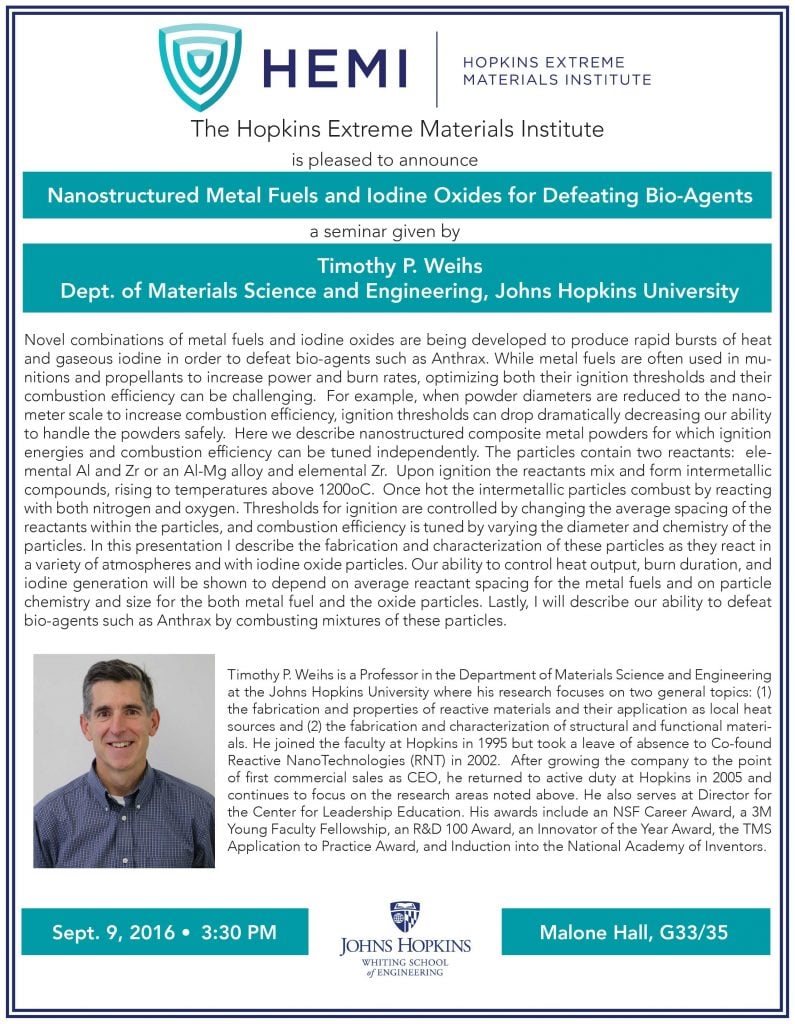Nanostructured Metal Fuels and Iodine Oxides for Defeating Bio-Agents
Timothy P. Weihs, Department of Materials Science and Engineering, Johns Hopkins University
Novel combinations of metal fuels and iodine oxides are being developed to produce rapid bursts of heat and gaseous iodine in order to defeat bio-agents such as Anthrax. While metal fuels are often used in munitions and propellants to increase power and burn rates, optimizing both their ignition thresholds and their combustion efficiency can be challenging. For example, when powder diameters are reduced to the nanometer scale to increase combustion efficiency, ignition thresholds can drop dramatically decreasing our ability to handle the powders safely. Here we describe nanostructured composite metal powders for which ignition energies and combustion efficiency can be tuned independently. The particles contain two reactants: elemental Al and Zr or an Al-Mg alloy and elemental Zr. Upon ignition the reactants mix and form intermetallic compounds, rising to temperatures above 1200oC. Once hot the intermetallic particles combust by reacting with both nitrogen and oxygen. Thresholds for ignition are controlled by changing the average spacing of the reactants within the particles, and combustion efficiency is tuned by varying the diameter and chemistry of the particles. In this presentation I describe the fabrication and characterization of these particles as they react in a variety of atmospheres and with iodine oxide particles. Our ability to control heat output, burn duration, and iodine generation will be shown to depend on average reactant spacing for the metal fuels and on particle chemistry and size for the both metal fuel and the oxide particles. Lastly, I will describe our ability to defeat bio-agents such as Anthrax by combusting mixtures of these particles.
Seminar will be held in Malone Hall, G33/35 from 3:30PM – 4:30PM.




